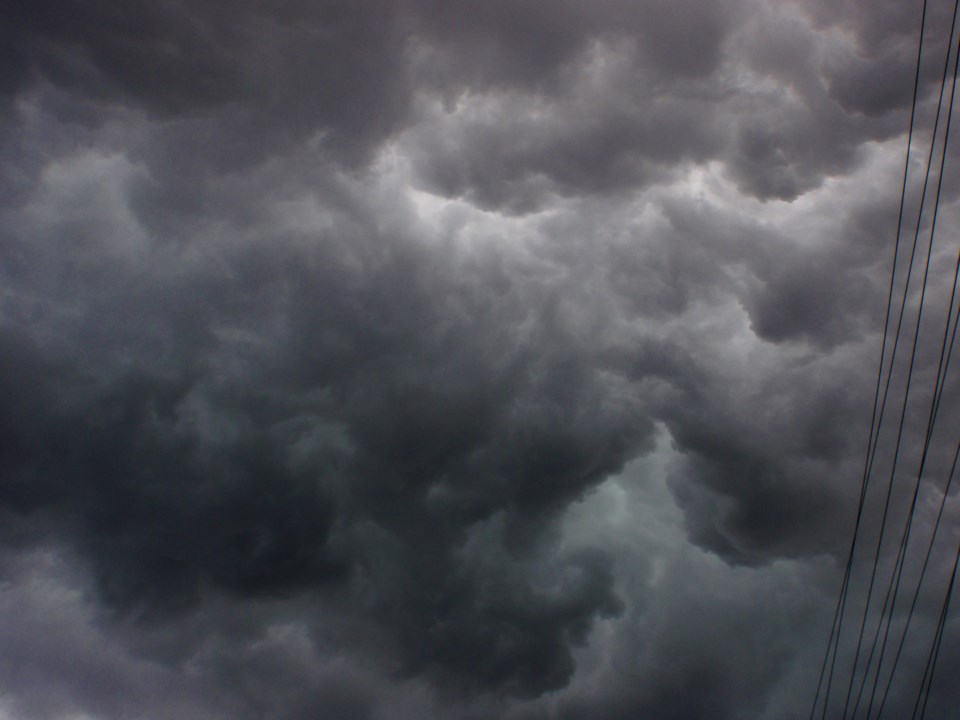Physics is the science that deals with the relationships between matter and energy. It deals with things like force, mass, weight, movement, velocity, acceleration and other confusing aspects that have an effect upon us. It is a subject that most of us waded through in high school or college, yet it is also a study that some people have found perverse pleasure in devoting their life work towards.
The trouble with physics is that if you don't know how it works, it will work against you whether you want it to or not. Battle cries of physics students include "For every action there is an equal and opposite reaction", and "if you push something hard enough, it will fall over", or "speed doesn't kill, it's the damn sudden stop." Yeah, yeah… whatever.
I'm the type of person who, while interested in the concepts of natural forces, needs to see or experience firsthand an example of the topic played out before me. A recent wind storm that ripped through the neighbourhood took me back to a similar event when I experienced the shock and awe of natural physics. The scene was at the marina of a high-end lake resort when a mini-hurricane came across Lake Muskoka and slammed into our marina.
By the time I arrived on the scene a few impressive events had already happened: a large boat had been torn from its moorings, lifted atop a floating section of dockwork, and was then pushed across and over said dock. That boat, and a few dock sections, were now being hammered into the beach by wave after rather large wave. Those who witnessed this were understandably impressed.
To enter the noble field of engineering, I assume one has to study that dreaded concept of physics. Only now there was the additional terms of "tensile strength, friction, leverage, weight-bearing load" and other such thingies to understand. I also assume marinas and docks are designed by engineers who, at some point in their education, received a passing grade in such matters. Or maybe not. But what do I know, other than that the boats and docks were being torn apart as we watched.
Now here is where the study of physics meshes with psychology, or 'how men think'. Before us, boats were frantically bobbing up and down in their slips, ropes brought so taut to the point where some were snapping; docks were heaving like a fun-house cat-walk, as their link pins had been sheared and the sections were barely held in place by the heavy chains and anchors below. We looked at each other. "Yep, guess we should go out there and adjust some of them there mooring lines."
The fun part about a dangerous situation is that it can be exhilarating to be involved, until somebody gets hurt. But then it would be called a sport. So this was no sport, just wild fun, fed by a crazy sense of duty to somehow lash down the bucking boats in a more secure manner.
Have you ever been to a wreck 'em derby? You know, where they smash cars into each other until only one remains moving. It would be foolhardy to walk onto such a playing field, wrench in hand, to try to fix a loose bumper while the game is in play.
For some reason, as we crawled along the bucking and swaying dock with various parts of boat anatomy swishing madly by beside our limbs, this wreck 'em derby image came to mind.
The velocity of the wind had caused a great amount of friction upon the surface of the lake, thus lifting and propelling the top layer of water molecules at great velocity and pressure towards the shallow part of the lake (called the beach). As this mass of moving water encountered an underwater upward slope of the lake bed, it was redirected in an upward yet still forward moving manifestation called a Hell of a big wave. This I know from first-hand experience.
When a mooring line breaks, it is usually due to friction and stress playing against the tensile strength of whatever material the rope was created from, coupled with the mass and weight of the boat that wants desperately to move in an opposite direction. Some types of rope wear well, while others tend to break more readily; many of the boats that surrounded us were tied up with the latter type of rope.
Occasionally, whenever a toehold, finger hold, or tooth hold could be found to keep you from being blown or slid off the dock, one could pause to simply observe the forces of nature and physics at play.
Take that boat over there for example. See how the stern rides low into the trough between waves, then rides ever higher as the next wave picks it up. And then, just as the wave is about to pass by, it carries the boat forward and drives the bow into the wooden dock, prying the deck boards cleanly off. Amazing. As the waves came in series, the boat had become a battering ram, hitting and hitting and hitting the dock. We opted to tie down another boat as that one was a tad too aggressive in its nature.
By the time the storm had blown through, the landscape had changed. Dock sections were now firmly aground on the distant beach. Boats sat much lower on the water as they had as much of the liquid inside them as around them. Flotsam gently tickled the sand beach, a life jacket here (empty, thankfully), a boat cover there, a tangled buoy line was strung like a patio decoration between lounge chairs.
Ah, the lessons learned from an early fall zephyr.
